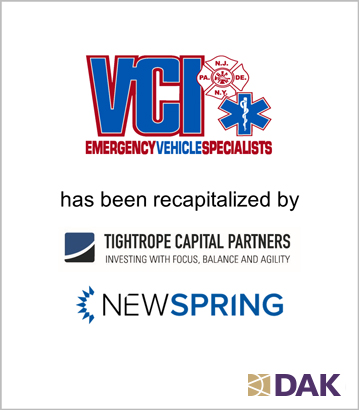The economy is changing, technology is evolving and standing still is not an option. The owners of mid-market commercial integration firms must choose between several financial paths, including investment in growth, engaging in M&A activity and cashing in.
The commercial integration industry has historically focused on project-oriented business. Working with clients to design cutting-edge solutions to address their A/V needs and integrating those solutions on-time and under-budget are the hallmark of the CI industry.
If you provided excellent customer service coupled with strong technical acumen and rigorous project management, clients would generally return to you for their next project.
The rapid evolution of technology is now changing the paradigm. The rise of tech-enabled workspaces that demand more IT-centric services combined with unified communications and the impact of collaboration on the industry are forcing traditional integrators to look for more ways to help their customers adapt to how workplaces have changed and continue to change.
The National Center for the Middle Market reported that mid-market companies recorded 7.2% average revenue growth in the second quarter of 2016, building upon already strong figures from Q1. In addition, positive sentiment among commercial integrators, as evidenced by CI’s 2016 State of the Industry report, continue to lay the groundwork for growth in 2016.
Nearly a third of respondents to CI’s 2016 survey expect revenue to grow by over ten percent, with two-thirds of respondents expecting revenue to grow by at least five percent. Improving financial performance combined with employment growth and record highs in the equity markets are keeping mid-market corporate valuations at near record levels.
Now is the perfect time for business owners to make a decision. They can choose to continue to grow organically as well as by making acquisitions, finding partners or additional funding or maybe it is a good time to exit out, when their company’s value could be at a record high.
The middle market is expanding, becoming more complex and facing significant changes that will create both challenges and opportunities.
For instance, the rise of increasingly complex standards and regulations in certain industries has driven brand manufacturers to seek partners who can handle their growing compliance requirements, as well as make investments in human resources, new equipment, more integrated information technology and other capabilities.
Similarly, the convergence of IT and A/V combined with the rise of managed services has caused integrators to take stock of their capabilities and determine if and how they can remain relevant to their clients.
CI’s 2016 State of the Industry report confirms that the vast majority of the industry has experienced challenges in expanding recurring revenue through service contracts. Only one in five respondents to this year’s survey earn more than 10% of their revenue through service contracts, while 27% earn zero.
You may need to ask yourself if these are capabilities you have internally, and if not, how and where you will acquire the skills, experience and competencies.
Many executives and stakeholders are wondering what strategic direction is best for them. As a rule of thumb, the process should begin with a true evaluation of your own situation, both business and personal; a discussion with your management team; and a brainstorming session with an investment banker who is experienced in guiding your type of business through strategic alternatives.
The investment banker should understand your role in your industry as well as the needs of businesses of your size. The banker’s role is like that of a “strategic coach” who can help you start the process and navigate the intricacies of transactions; they know how to sell and buy companies, how to get the most value from a transaction and how to leverage your assets in different ways—from a partial sale to a strategic alliance to raising capital.
Do I Grow?
Once you’ve made the decision to invest in the company in order to keep up with demand, the next question is: How?
Can I grow my business organically or do I need to add external assets to keep moving forward?
Here are some of the basic strategies:
- Partner: Seek a strategic partnership to propel growth with expanded resources and/or capabilities.
- Secure Growth Capital: There are a number of sources of growth capitol available. Selecting the right one for your business depends on your situation. Three of the most popular methods are: bank debt via a commercial loan at favorable market rates and terms; mezzanine financing through an unsecured loan that typically commands higher interest rates than a bank loan, but has no principle amortization, providing better liquidity; and equity investment, in which an individual or firm exchanges cash for ownership in your company with the anticipation of sharing in the income and growth.
- Acquisition: You should only choose to acquire another company that will be accretive to the value of your business. You can start by developing a checklist of criteria that the acquisition should provide. Some key areas for consideration are adding product lines, distribution channels, capacity, capabilities or geography. Always consider the impact of additional customers.
- Organic Growth: Create new ways to increase revenue by using your existing resources more effectively.
Do I Take Money Off the Table?
There are several options that exist to take money off the table. You can do a recapitalization or “recap” of the business that will reorganize the balance sheet and allow the owner to get money out of the business while maintaining control.
You can also sell all or part of the business. There are several types of buyers who have different advantages and attributes that can be considered:
- Strategic Buyer: A strategic buyer often pays the highest price and has significant synergistic reasons for executing on a transaction. Your company’s capabilities could increase the strategic buyer’s scope in ways you may never imagine, substantially increasing their own value and paying you a lucrative multiple. In today’s market, foreign strategic buyers are paying above market prices as a way to get into the US Market.
- Private Equity: There are also a large number of private equity firms who are active in middle market industries. If your transaction is structured correctly, these firms will purchase a portion of your company (some majority, some minority), allow you to take money off the table, stay involved and share in the growth. This is an appropriate hedging strategy for those who aren’t quite ready to exit, and want to hedge their bets.
What is My Business Worth?
In any of the above scenarios, your investment banker should be able to help you understand the value of your business. Be very careful about the industry rule of thumb: The specifics of your business really impact its value.
It’s important for you to understand the value that an investor sees in your company. If the purchaser is strategic, then you need to know how your business will impact the value of their business to obtain the highest valuation.
Don’t assume that an industry average multiple is the right valuation metric for your business. This is particularly poignant for commercial integrators. The marketplace places different value on cash flows associated with project-oriented businesses than those that result from recurring revenue streams (such as managed services). Integrators whose business is a hybrid should take that into account particularly when allocating investment dollars to their business.
Fred D’Alessandro, CEO of New Jersey-based technology integrator Diversified, has been focused on growing the business for many years.
“You can never get comfortable in business” says Fred, “when it comes to creating, building, and maintaining corporate value, it’s essential to keep your eye on the evolving needs of your customer; ensure that you have the skills and expertise to meet and exceed those needs; and maintain focus on delivering outstanding customer service.”
In 2016, Diversified implemented an M&A strategy raising capital to meet customer demands. They subsequently acquired two commercial integrators, Atlanta-based Technical Innovation and New Jersey-based The Systems Group that complemented Diversified’s geography and portfolio of services.
Fred continued saying, “It’s critically important to know who you are and where you can become better so our recent acquisitions of TI and TSG not only makes our business stronger but adds value for our customers and employees alike. Having access to capital brings opportunity and offers many options for us now and in the future.”
All in all, acquisitions and divestitures represent great opportunities for middle market businesses to take advantage of the changing market. With sound advice, good planning and a strategic approach, you can review a number of options to determine which is best for your business.
Selling your own company—or buying someone else’s—is not a task you want to take on without the assistance of experts that understand the steps, can navigate the process and bring value to whichever side of the table you end up on.
Therefore, we recommend consulting with experienced professionals, including investment bankers, attorneys and accountants who can help guide you through the process.
CLICK BELOW FOR:
PRINTABLE VERSION





